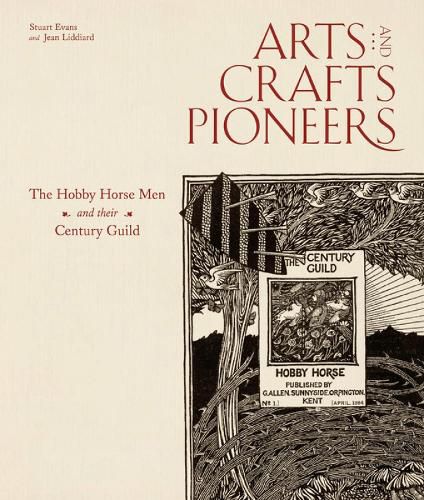Readings Newsletter
Become a Readings Member to make your shopping experience even easier.
Sign in or sign up for free!
You’re not far away from qualifying for FREE standard shipping within Australia
You’ve qualified for FREE standard shipping within Australia
The cart is loading…






Surveying for the first time the Century Guild of Artists and its influential periodical, the Century Guild Hobby Horse, this original publication asserts the significance of the Guild in the development of the Arts and Crafts movement and its modernist successors.
The founders of the Century Guild - architect Arthur Heygate Mackmurdo and his 18-year-old assistant Herbert Percy Horne (afterwards joined by the artist and poet Selwyn Image) - were driven by the ambition to answer John Ruskin’s radical call to regenerate art and society. Motivated by the concept of ‘the Unity of Art’, the Guild embraced a spectrum of arts which included architecture, painting, sculpture, metalwork, textiles and stained glass. It also reached out to music and literature, aiming to educate its public in practical form.
Skilfully weaving chronology with the impressive artistic achievements of the collective, the authors also draw out the lively personalities of each of the protagonists and their wider circle. For anyone fascinated by the Arts and Crafts movement, this is essential reading.
$9.00 standard shipping within Australia
FREE standard shipping within Australia for orders over $100.00
Express & International shipping calculated at checkout
Surveying for the first time the Century Guild of Artists and its influential periodical, the Century Guild Hobby Horse, this original publication asserts the significance of the Guild in the development of the Arts and Crafts movement and its modernist successors.
The founders of the Century Guild - architect Arthur Heygate Mackmurdo and his 18-year-old assistant Herbert Percy Horne (afterwards joined by the artist and poet Selwyn Image) - were driven by the ambition to answer John Ruskin’s radical call to regenerate art and society. Motivated by the concept of ‘the Unity of Art’, the Guild embraced a spectrum of arts which included architecture, painting, sculpture, metalwork, textiles and stained glass. It also reached out to music and literature, aiming to educate its public in practical form.
Skilfully weaving chronology with the impressive artistic achievements of the collective, the authors also draw out the lively personalities of each of the protagonists and their wider circle. For anyone fascinated by the Arts and Crafts movement, this is essential reading.